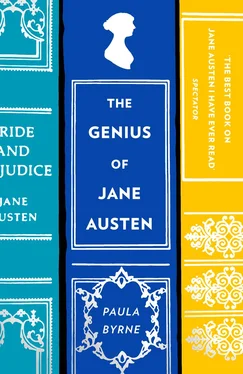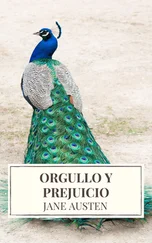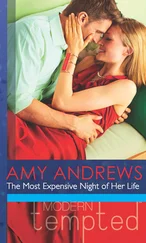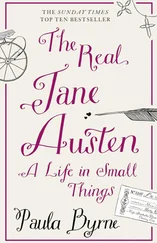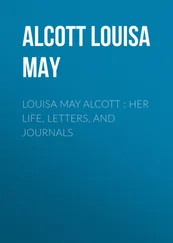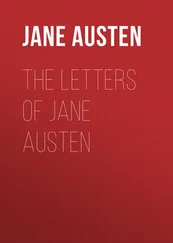I make a number of passing references to Northanger Abbey , in which the heroine, Catherine Morland, resembles the naive ‘country girl’ of the comic tradition in the theatre, but of course the main thrust of this book’s comedy is its parody of the Gothic novel. My argument about the importance of the theatre for Jane Austen is in no respect intended to diminish the importance of her engagement with the traditions of the novel. I draw attention to many neglected theatrical allusions in her work, but there are also many – frequently documented – allusions to eighteenth-century fiction. Indeed, it is an important part of my argument that from Fielding and Richardson through to Austen and her peers, especially Fanny Burney and Elizabeth Inchbald, there was vigorous two-way traffic between the new form of the novel and the ancient art of the drama. It must, however, be acknowledged that, unlike Inchbald and Burney, Austen never expressed the desire actually to write for the public stage.
Although Austen’s final works are less obviously theatrical than her earliest ones – I do not offer a detailed account of Persuasion 9– she participated in private theatricals well into her adult life, as may be seen from some fascinating and little-known passages in the unpublished journals of her niece Fanny Knight. She also took Fanny to the theatre whenever she got the chance. Her periods of residence in London, Bath and Southampton provided ample opportunities for theatre-going with her brood of nieces and nephews. In her letters she recorded her relish for the performances of the renowned tragedian Edmund Kean and the celebrated comic actress Dora Jordan, as well as her particular fondness for Robert Elliston, the star of the Bath Theatre Royal, whose fortunes she followed when he moved to the London stage. Even when in the country, when she was far away from the theatres, she maintained her interest by reading plays, both old and new. She also picked up theatre gossip from the newspapers and would have been able to keep up with reviews of new performances, for this was the age when professional theatre-reviewing grew to maturity.
Twentieth-century criticism was fixated on the assumption that Jane Austen was immovably attached to village life and deeply suspicious of urban pleasures – the theatre foremost among these. 10This book presents quite another picture: an Austen who enjoyed urban life, who attended the theatre whenever she could, and who took enormous pleasure in the theatrical scene. A recovery of the theatrical Austen makes it difficult to persist in regarding her as a supremely parochial novelist, much less as an isolated, defensive, class-bound or reactionary one.
The first part of the book establishes Jane Austen’s knowledge of the world of the theatre. The second part explores how that knowledge shaped her own art. It demonstrates how she makes allusions that assume considerable theatrical knowledge – of a kind now lost to us – on the part of her first readers. And it examines the ways in which the novels adapt a wide range of techniques from the stage tradition, including dramatic entrances and exits, comic misunderstandings, ironic reversals and tableaux.
A particularly important device is what I call the ‘set-piece’: chapters or episodes framed as set-pieces are often analogous in shape and length to a scene in a play. It is helpful here to cite a comment of Henry James, another nineteenth-century novelist much interested in scenic construction – and indeed in the writing of plays. His novel The Awkward Age was organised entirely on scenic principles. In his author’s preface, James pictured each of his episodes as a lamp:
Each of my ‘lamps’ would be the light of a single ‘social occasion’ in the history and intercourse of the characters concerned, and would bring out to the full the latent colour of the scene in question and cause it to illustrate, to the last drop, its bearing on my theme. I revelled in this notion of the occasion as a thing by itself, really and completely a scenic thing. 11
The building bricks of Austen’s novels were also dramatic scenes. This is one reason why they adapt so well to film representation.
We naturally think of Jane Austen as a pioneer of the nineteenth-century realist novel. But she also lived through a great age of English stage comedy. The aim of this book is to restore her to the company of such admired contemporaries as Richard Brinsley Sheridan and Hannah Cowley, while also setting her in the great tradition of English drama that stems from Shakespeare.
PART ONE
The Novelist and the Theatre
A love of the theatre is so general …
Mansfield Park
1
The fashion for private theatricals that obsessed genteel British society from the 1770s until the first part of the nineteenth century is immortalised in Mansfield Park . The itch to act was widespread, ranging from fashionable aristocratic circles to the professional middle classes and minor gentry, from children’s and apprentices’s theatricals to military and naval amateur dramatics. 1
Makeshift theatres mushroomed all over England, from drawing rooms to domestic outbuildings. At the more extreme end of the theatrical craze, members of the gentrified classes and the aristocracy built their own scaled-down imitations of the London playhouses. The most famous was that erected in the late 1770s at Wargrave in Berkshire by the spendthrift Earl of Barrymore, at a reputed cost of £60,000. Barrymore’s elaborate private theatre was modelled on Vanbrugh’s King’s Theatre in the Haymarket. It supposedly seated seven hundred. 2
Private theatricals performed by the fashionable elite drew much public interest, and had profound implications for the public theatres. 3On one occasion in 1787 a motion in the House of Commons was deferred because too many parliamentarians were in attendance at a private performance of Arthur Murphy’s The Way to Keep Him at Richmond House. 4Such private performances often drew more attention in the newspapers than the theatres licensed for public performance.
From an early age Jane Austen showed her own mocking awareness of what the newspapers dubbed ‘the Theatrical Ton’. In a sketch called ‘The Three Sisters’, dating from around 1792, she portrayed a greedy, self-seeking young woman who demands a purpose-built private theatre as part of her marriage settlement ( MW , p. 65). In Mansfield Park , the public interest in aristocratic private theatricals is regarded ironically: ‘To be so near happiness, so near fame, so near the long paragraph in praise of the private theatricals at Ecclesford, the seat of the Right Hon. Lord Ravenshaw, in Cornwall, which would of course have immortalised the whole party for at least a twelve-month!’ ( MP , p. 121). Austen carefully distinguishes between the fashionable elitist theatricals of the aristocracy, of the kind that were mercilessly lampooned by the newspapers, and those of the squirearchy. 5While Mr Yates boasts that Lord Ravenshaw’s private theatre has been built on a grand and lavish scale, in keeping with aristocratic pretensions, Edmund Bertram shows his contempt for what he considers to be the latest fad of the nobility:
‘Let us do nothing by halves. If we are to act, let it be in a theatre completely fitted up with pit, box and gallery, and let us have a play entire from beginning to end; so as it be a German play, no matter what, with a good tricking, shifting after-piece, and a figure dance, and a hornpipe, and a song between the acts. If we do not out do Ecclesford, we do nothing.’ ( MP , p. 124)
Edmund’s mocking comments are directed to his elder brother. But despite Tom Bertram’s efforts to professionalise his theatre, the Mansfield theatricals eventually fall back on the measure of converting a large room of the family home into a temporary theatre for their production of Lovers’ Vows . In reality, this was far more typical of the arrangements made by the professional classes and the minor gentry who had also adopted the craze for private theatricals. The private theatricals of Fanny Burney’s uncle at Barbone Lodge near Worcester, for example, took place in a room seating about twenty people. At one end of the room was a curtained off stage for the actors, while the musicians played in an outside passage. 6
Читать дальше
